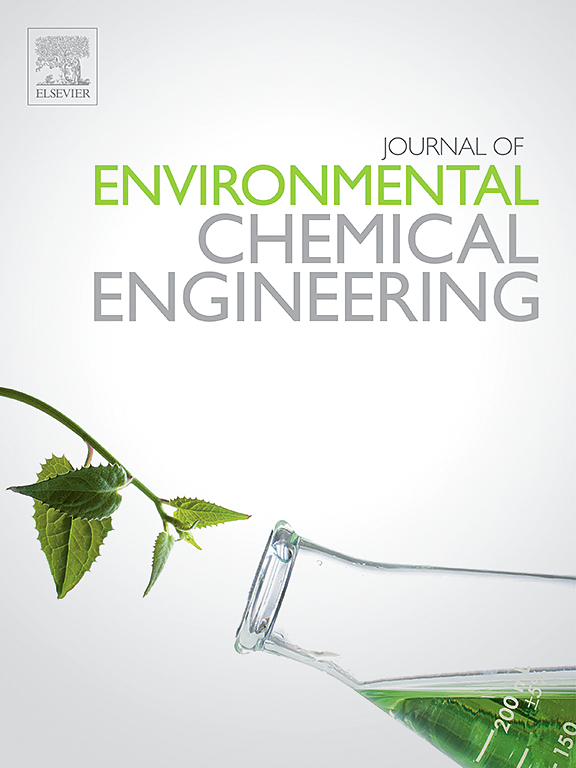电纺纳米纤维膜在环境修复中应用的最新进展
IF 7.4
2区 工程技术
Q1 ENGINEERING, CHEMICAL
引用次数: 0
摘要
环境污染已成为当今世界亟待解决的问题。随着工业化和城市化进程的加快,大量有害气体和固体废弃物排入大气、水体和土壤,导致环境质量急剧下降。纳米纤维材料因其优异的理化性能、可控释放性和环境友好性而备受关注。作为一种新型纳米材料,纳米纤维膜(NFMs)在环境处理方面显示出巨大的潜力。在制备纳米纤维膜的众多方法中,电纺丝是一种绿色技术。该技术制备的纳米纤维膜具有形态可调、比表面积高、孔结构可控等优点,可为吸附水中和大气中的污染物提供更多的活性中心。本文在简要介绍电纺丝原理的基础上,重点探讨了电纺 NFM 在环境修复方面的应用,包括吸附有机染料、吸附重金属离子、吸附抗生素和其他药物、消除细菌、净化空气等。同时,分析了电纺 NFMs 在环境修复领域面临的挑战,并探讨了其未来的发展方向。本文章由计算机程序翻译,如有差异,请以英文原文为准。
Recent progress of applications of electrospun nanofibrous membranes in environmental remediation
Environmental pollution has become a pressing issue in today's world. With the acceleration of industrialization and urbanization, a large number of harmful gases and solid wastes are discharged into the atmosphere, water and soil, resulting in a sharp decline in environmental quality. Nanofibrous materials have attracted much attention due to their excellent physicochemical properties, controllable release and environmental friendliness. As a new type of nanomaterial, nanofibrous membranes (NFMs) has shown great potential in environmental treatment. Among numerous methods for the preparation of NFMs, electrospinning is a green technology. The NFMs obtained by this technique have the advantages of adjustable morphology, high specific surface area and controllable pore structure, which can provide more active centers for the adsorption of pollutants from water and the atmosphere. Based on a brief introduction of the principle of electrospinning, this paper focuses on the application of electrospun NFMs in environmental remediation, including the adsorption of organic dyes, adsorption of heavy metal ions, adsorption of antibiotics and other drugs, elimination of bacteria, air purification and so on. Meanwhile, the challenges of electrospun NFMs in the field of environmental remediation are analyzed, and their future development direction is discussed.
求助全文
通过发布文献求助,成功后即可免费获取论文全文。
去求助
来源期刊

Journal of Environmental Chemical Engineering
Environmental Science-Pollution
CiteScore
11.40
自引率
6.50%
发文量
2017
审稿时长
27 days
期刊介绍:
The Journal of Environmental Chemical Engineering (JECE) serves as a platform for the dissemination of original and innovative research focusing on the advancement of environmentally-friendly, sustainable technologies. JECE emphasizes the transition towards a carbon-neutral circular economy and a self-sufficient bio-based economy. Topics covered include soil, water, wastewater, and air decontamination; pollution monitoring, prevention, and control; advanced analytics, sensors, impact and risk assessment methodologies in environmental chemical engineering; resource recovery (water, nutrients, materials, energy); industrial ecology; valorization of waste streams; waste management (including e-waste); climate-water-energy-food nexus; novel materials for environmental, chemical, and energy applications; sustainability and environmental safety; water digitalization, water data science, and machine learning; process integration and intensification; recent developments in green chemistry for synthesis, catalysis, and energy; and original research on contaminants of emerging concern, persistent chemicals, and priority substances, including microplastics, nanoplastics, nanomaterials, micropollutants, antimicrobial resistance genes, and emerging pathogens (viruses, bacteria, parasites) of environmental significance.
 求助内容:
求助内容: 应助结果提醒方式:
应助结果提醒方式:


